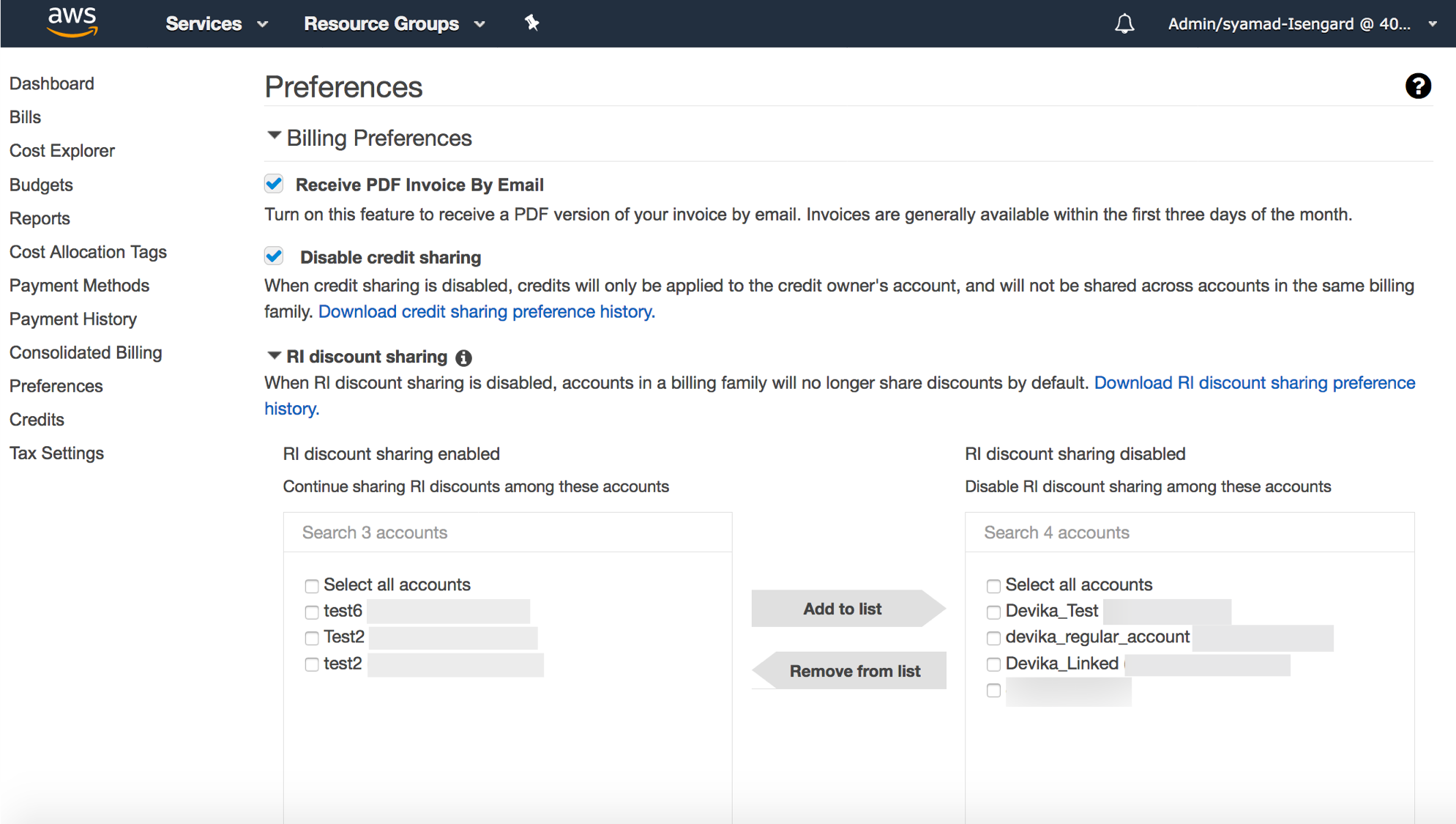AWS Public Sector Blog
Controlling How Your AWS Credits and RI Discounts are Shared Across Your Organization
No matter where you work, accounting for your costs can be complex. This is especially true in the public sector, where organizations, universities, and other entities are required to adhere to strict accounting constraints – particularly when accounting for grants and other forms of external funding. Oftentimes, customers use external funding to purchase cloud resources, so it is important that these funds are only allocated towards costs associated with the specific researcher or project for which the external funding was obtained.
To help our customers better understand their cloud costs, AWS provides a number of tools to help you analyze and control your costs and usage, including the ability to customize how your credits and Reserved Instances (RI) discounts are allocated across your organization. Using the steps outlined below, you can adjust your credit and RI discount sharing preferences so your billing preferences align with your accounting goals.
Access the AWS Billing Preferences
From the AWS Billing Console, you can adjust your billing, cost management, and other settings for your organization. You can see the preferences in the image below.

Adjust your Credit Sharing Preferences
Grant money is often used to purchase cloud resources. Additionally, to help public sector customers get started with the cloud, AWS runs a number of programs, specifically the AWS Programs for Research and Education. Sometimes these grants (including the credit-based programs run by AWS) are offered as AWS Promotional Credits. It is important to adjust your credit sharing preferences so this funding benefits only the researcher or project who received it.
To maximize customer savings, credits are first allocated, by default, to qualifying usage that is incurred by the credit owner’s account. From there, credits are shared across your AWS organization so you (and any member accounts) receive the lowest possible bill. While this approach maximizes your organization’s savings, it can make sense to keep your lines of business separate.
To do this, you can adjust the “Disable Credit Sharing” preference, which signals to AWS that your organization would no longer like to share credits across accounts.

Once disabled, credits will only be allocated to usage incurred by the credit owner’s account, and any residual credit amount will not be applied to usage incurred in the current month. If the credit is not expired, then the residual amount will be applied to qualifying usage incurred by the credit owner’s account in subsequent months.
From there, you can refer to the AWS Bills page to view how your credits are being applied. From the AWS Bills page, you can view information about your individual credits, as well as the credit owner’s account ID.

This setting can be changed at any time. You can also download a log of your credit sharing preference history from the AWS billing preferences page.
To learn more about disabling credit sharing, please access the AWS Credits section of the Consolidated Billing for Organizations user guide.
Adjust your RI Discount Sharing Preferences
A number of AWS services (including Amazon EC2, Amazon RDS, and Amazon Redshift) offer RIs, which allow customers to receive sizable discounts (compared with on-demand usage). RIs are most effective when applied towards steady-state usage, so customers in the public sector will often use their grants to purchase resource capacity in advance (either via a 1- or 3-year lease) so as to secure discounted rates for their anticipated usage.
Similar to credits, RI discounts are first applied, by default, to qualifying usage incurred by the RI owner’s account, before being applied to qualifying usage incurred by other accounts in the same AWS organization. This logic is in place so that organizations with consolidated billing can maximize their savings by leveraging unused discounts.
However, it can make sense to disable the sharing of RI discounts, particularly in cases where you want to keep certain lines of business separate. To do this, AWS lets you disable the sharing of RI discounts for some or all accounts in your organization. You simply need to designate which of your member accounts should or should not have RI discount sharing enabled.

Once RI discount sharing is disabled for particular accounts, those accounts will only receive discounts associated with the RIs that they own and they will not receive any discounts associated with RIs owned by other accounts. If you choose to disable the sharing of RI discounts across your AWS organization, this can potentially lead to a higher bill for the organization.
To learn more about disabling RI discounts, please access the Reserved Instances section of the Consolidated Billing for Organizations user guide.
To access more information about other billing and cost management solutions, you can access the AWS Cost Management webpages.
Subscribe to the AWS Public Sector Blog newsletter to get the latest in AWS tools, solutions, and innovations from the public sector delivered to your inbox, or contact us.
A guest post by:
Devika Nair is a Senior Product Manager in the AWS Billing space. She specializes in building tools that enable customers to access, monitor, and optimize their AWS costs, usage, and Reserved Instances.
Erin Carlson is a product marketing manager for the AWS Cost Management experience. She works with customers to provide helpful guidance and resources around accessing, analyzing, and optimizing their AWS costs and usage.